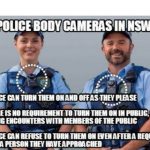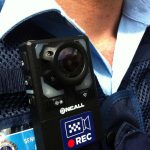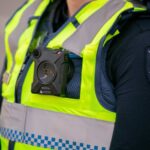NSW Police Turned Their Body Cameras Off Before Fatally Shooting Mentally Ill Man
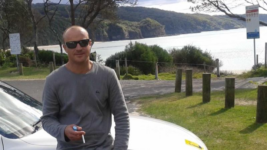
NSW police tactical operations officers didn’t have to shoot Todd McKenzie dead on a July evening in 2019. Yet, following a nine-hour siege, five officers stormed his Taree home, where he was alone, and shot the 40-year-old man, having a mental health crisis, three times in the back.
Evidence heard in the first week of his inquest has a local officer, who was attending a man having a schizophrenic episode, proceeding to aggravate McKenzie, suggesting that he was “speaking dribble”, lying and a drain on the country, while he further taunted Todd to step outside for a fight.
Over the second week of the coronial inquiry, testimony revealed that when Tactical Operations Regional Support officers arrived at the scene, they then ordered local police to turn off their body-worn cameras, despite Taree officers having been recording for the previous two and a half hours.
The police approach taken to McKenzie, which resulted in a lone man armed with only kitchen utensils being killed in his home, is a tragedy in itself. But it also highlights the issue with the criminal justice system being employed to regularly police and detain people with mental health issues.
Beginning on 27 March, the three-week inquest was delayed, as an attempt by police to suppress procedural details and officer names was challenged by Todd’s parent’s legal representatives, the National Justice Project, which asserted such information could be vital in preventing future deaths.
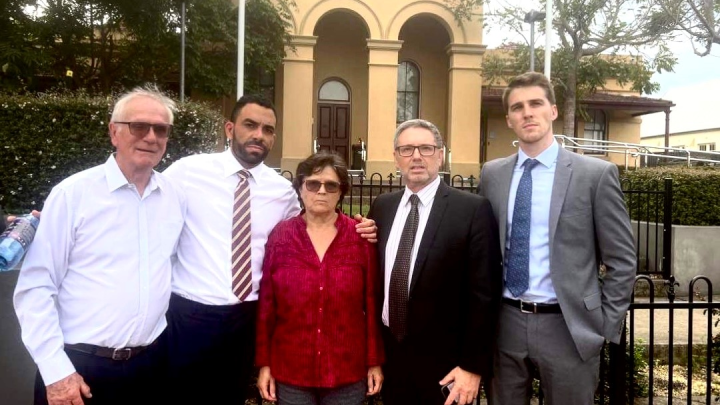
Ensuring a lack of accountability
“If the local police thought to turn on their body-worn cameras when they spoke with Todd, why couldn’t all those present have cameras running, particularly when police officers breached the front door of Todd’s house?” questioned National Justice Project director George Newhouse.
“Todd was not a terrorist. There were no hostages,” the principal solicitor made clear. “In fact, Todd was alone in his own home when NSW police decided to breach his house and security – you have to ask yourself why police would need to turn off their body-worn cameras in a life-or-death situation.”
In responding to a question from counsel assisting the coroner this week, a Taree senior police constable told the court that “obviously the tactical guys wanted all body-worn switched off”, as if it was par for the course.
Then, at 9.50 pm on 31 July 2019, with McKenzie’s home having been long surrounded by police, five tactical operations officers entered the house and went on to shoot the Taree man three times in the back, after, it’s claimed, he lunged at the police with a kitchen knife.
“If we had some more video evidence of this tragic event, today we would know much more about what happened that night,” Newhouse added in his 5th March statement. “NSW police must mandate the use of body cameras, at all times, as a vital tool for accountability and learning.”
Taunting the subject
NSW police claims that special officers, on entering the premises, initially used a stun gun on McKenzie to no avail, AAP News reported on 30 March. And after he was shot in the back three times, the 40-year-old man was then rushed to Manning Base Hospital, where he died.
One police negotiator gave evidence during the inquiry, relating to how she’d responded to McKenzie having episodes in the past, stating that he’d never been violent before, that he was “always cooperative with police”, and that he’d “never been confrontational”.
However, NJP put to the court that during the standoff, a general duties officer having taunted McKenzie, saying “confronting and derogative things”, is likely to have escalated the situation, and it was in direct contravention of the approach specialist officers are trained to take.
Early on during the siege, McKenzie had told general duties officers that his great-grandfather was an Anzac soldier, and he was in possession of his medals. And the officer in question then proceeded to contradict these assertions and goaded the man to come outside with his knife.
Criminalising the mentally ill
Police responding to McKenzie’s mental health episode is no anomaly, in fact, it’s the norm. A similar case occurred recently in Queensland, which saw police shoot down First Nations man Aubrey Donahue just last month, after they’d been called to respond to his threats to self-harm.
Over the year following McKenzie’s death, NSW police began trialling PACER (Police, Ambulance, Clinician, Early Response) at ten police districts across Sydney. The PACER program aims to provide a joint law enforcement and mental health response at such incidents.
However, PACER has yet to have been rolled out statewide and regional areas, like Taree, remain outside of its scope.
In 2018, Greens Senator David Shoebridge, whilst serving in NSW parliament, obtained police statistics, which reveal that over the previous two decades, NSW police officers had shot and killed 35 individuals, 19 of whom were people with a mental health condition.
This issue is not confined to law enforcement being deployed to mental health crises, however, as it also involves huge numbers of people suffering such issues being incarcerated, rather than receiving professional treatment, and this is especially so for First Nations people with mental health issues.
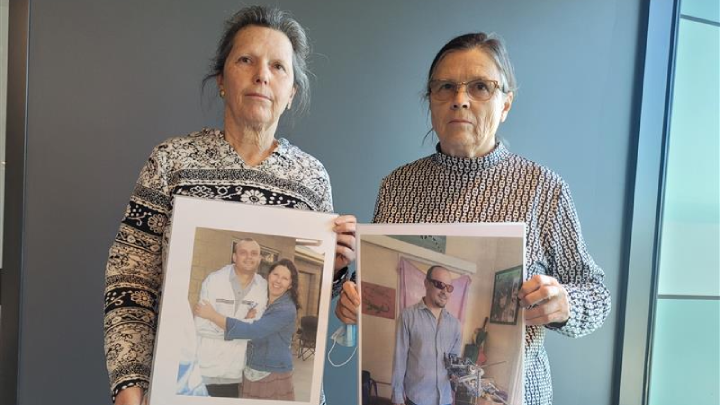
An avoidable tragedy
McKenzie’s aunt Francene Reo told reporters on the day after the shooting that, “It’s something that has been happening again and again and again, when you have somebody who has an acknowledged mental health problem, they have an incident, and they end up dead.”
In representing McKenzie’s mother, June Wilkins, and his stepfather, Neil, NJP says it’s important to establish whether the police aggravated the situation and ascertain whether there was adequate engagement with the family and mental health professionals in the lead up to his death.
“The NSW police have to deal with what happened. There have been so many inquests before this one, but things in NSW police don’t seem to change,” McKenzie’s parents said last week.
“Todd was kind and gentle. He wouldn’t have hurt anybody if left alone.”


